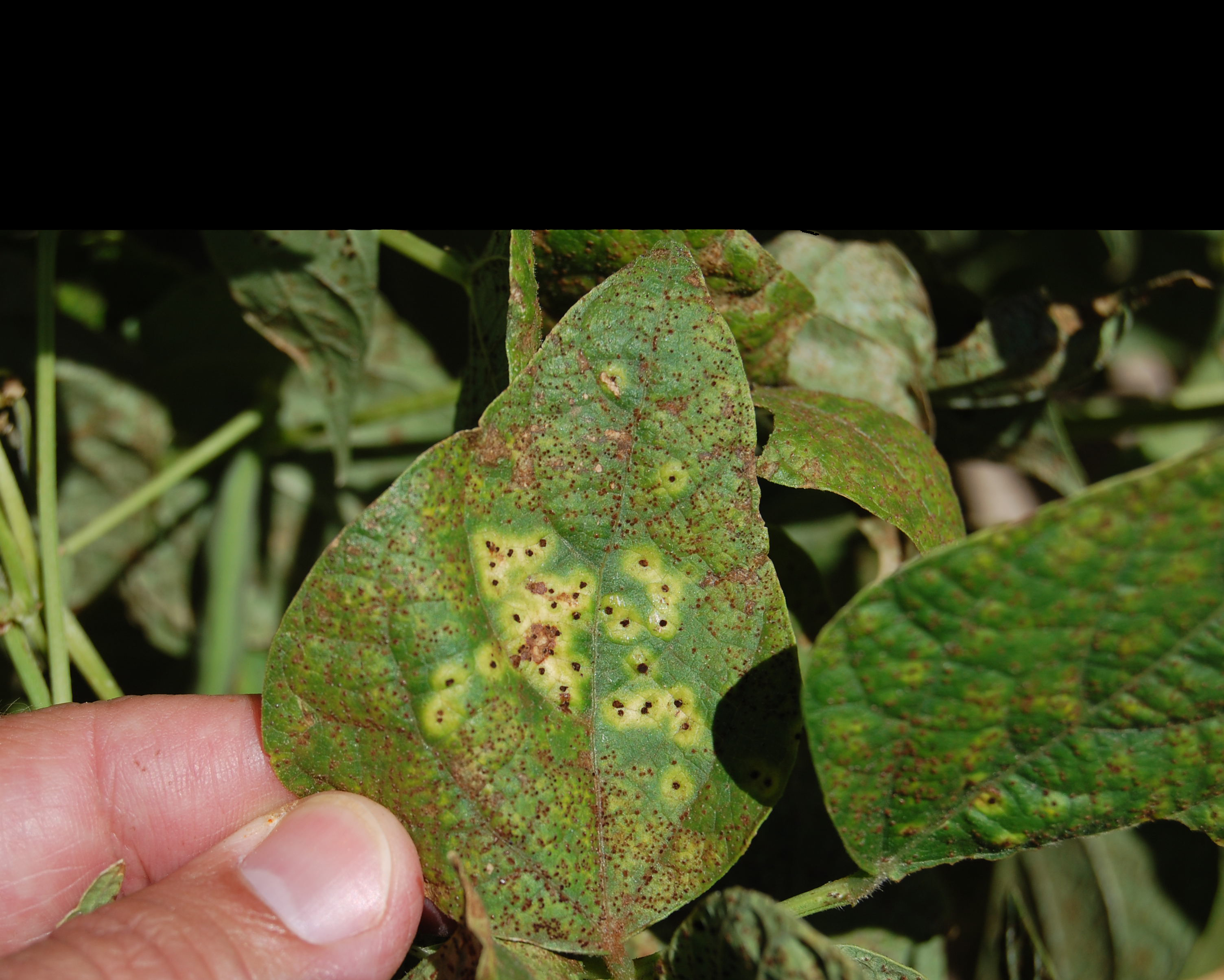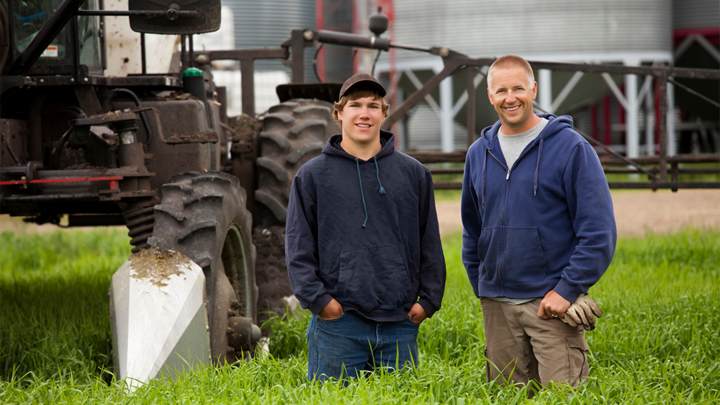By Robert Harveson, Extension Plant Pathologist
Pathogen
Fusarium solani (Mart.) Sacc. f. sp. phaseoli (Burkholder) W. C. Snyder and H. N. Hans. Fungal structures: microconidia, macroconidia, chlamydospores, sporodochia. Teleomorph: unknown. The pathogen produces septate, hyaline mycelium. Its macroconidia are mostly 3-septate (44.5 x 5.1 um) and 4-septate (50.9 x 5.3 um), and crescent-shaped with rounded or slightly pointed at the apex. Microconidia are rare, and conidia are borne in sporodochia. Chlamydospores are globose, terminal or intercalary and measure 11-12 um. Cultures are relatively slow growing compared to other form species, and usually contain various shades of blue or green in culture. The pathogen occurs in most cultivated soils where beans have been previously grown.
Disease Symptoms
The disease initially appears as red to reddish-brown lesions on stems and primary root two to three weeks after planting. Affected areas may merge and enlarge with age, turn necrotic, and gradually extend up from the soil surface. Primary and secondary roots are killed in severe cases. If moisture is sufficient, lateral roots may develop above the initial site of infection, which helps plants survive. Infected plants are rarely killed and above ground symptoms in the field include stunting and yellowing of leaves.

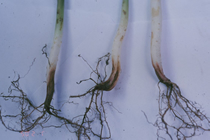
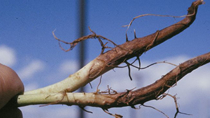
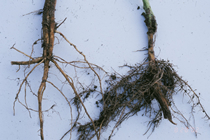
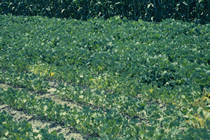
Favorable Environmental Conditions
Disease severity is worse from any condition contributing to plant stress. Early planting into cool soils, moisture stress (high or low), and soil compaction are all variables that contribute to increased root rot problems in beans. High plant populations, improper cultivations, and interactions of other soil-borne pathogens and herbicides have been known to aggravate root rot damage. The effect of Fusarium root rot is most apparent during flowering and early pod set.
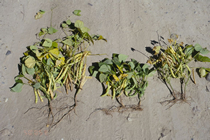
Management
Genetic Resistance
Few tolerant cultivars are available; however research at PHREC is currently working to develop better resistance in new cultivars.
Cultural Practices
Control options consist of planting after soils warm to 60°F, sub-soiling between bean rows, eliminating moisture stress, spacing plants 2-3 inches apart, and tilling soil up around base to encourage lateral root development above infected parts of roots. Rotation with non-host crops like corn, wheat, barley, or alfalfa may also be useful.
Chemical/Biological Control
Fungicide seed treatments may help to establish better stands early, but will not provide protection for the rest of the season.
